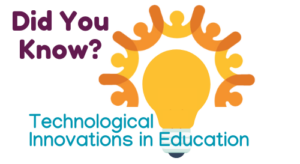Early Childhood Leaders Have the Power to Inspire, Motivate, and Support Innovation


 In the ever-evolving landscape of education, innovation plays a key role in shaping the future of teaching and learning. Early childhood leaders are in a unique position to spark this change and drive a culture of innovation in their institutions.
In the ever-evolving landscape of education, innovation plays a key role in shaping the future of teaching and learning. Early childhood leaders are in a unique position to spark this change and drive a culture of innovation in their institutions.
This prompts the question: How can early childhood leaders inspire, motivate, and support innovation?
Early childhood leaders have a wealth of opportunities to inspire innovation.
They can model how innovative and creative thinking leads to marked improvements in teaching and learning. By practicing what they preach, leaders can inspire their staff to explore new approaches and rethink traditional teaching methods. For example, share your screen during a virtual staff meeting to give everyone a practical demonstration of how you’re employing tools like ChatGPT, Bing, or Bard as you brainstorm themes for your next team retreat.
Open-ended questions are a powerful tool for stimulating creative thinking and problem-solving. By encouraging teachers to brainstorm innovative solutions to educational challenges, leaders can cultivate a fertile ground for growth and change. For example, you could employ collaborative tools such as Google Docs or Jamboard for brainstorming sessions, allowing teachers to contribute their ideas in real time about innovative solutions to educational challenges.
Leaders can also inspire by encouraging the sharing of ideas about ways to improve current practices. A culture of openness and collaboration can unlock fresh perspectives and creative approaches. Talking about the future and new possibilities prompts educators to push their boundaries and envision bold new approaches to education.
Motivating teachers to embrace innovation is another crucial aspect of a leader’s role. This motivation can be embedded into the fabric of the institution by integrating innovation as a key goal or strategy and placing it in a prominent place for all to see. For example, take some time to revisit your organization’s mission, vision, and strategic goals. Reflect on the extent to which innovation is woven into them. Ask yourself: Is the language promoting actual innovative practices or just paying lip service to the concept?
By making innovation an expectation rather than an exception, leaders can foster a culture where creative problem-solving is the norm. Recognizing and appreciating teachers who push their work to the next level can further motivate staff and create an environment where innovation is celebrated.
The power of early childhood leaders to inspire and motivate is amplified when they also provide support for innovation. Creating a safe environment for exploring new ideas is paramount. Leaders can demonstrate their support by allowing teachers to discuss new methods they’ve tried, tolerating mistakes as part of the learning process, and celebrating new ideas. This might mean setting up a makerspace with cutting-edge tech tools, facilitating workshops on how to use educational apps, or offering PD sessions on how to integrate coding into early childhood curriculum.
Leaders also support innovation by providing teachers with the time and resources they need to innovate. This could involve facilitating professional development and training opportunities that encourage innovative thinking. In addition, leaders should provide opportunities for teachers to become comfortable with available technological resources. They also can encourage innovative teachers to lead staff development sessions, thereby promoting a culture of peer learning and collaboration.
In conclusion, early childhood leaders have immense power to inspire, motivate, and support innovation. By championing new ideas, leveraging technological advancements, celebrating creativity, and providing the necessary support, early childhood leaders lay the groundwork for a future where innovation is at the heart of education.
A Special Acknowledgment:
The insights featured in this article were gathered during a series of training courses that CE International conducted for an incredible group of early childhood development (ECD) leaders in Singapore. We would like to express our heartfelt gratitude to all the dedicated early childhood leaders who took part in the training. Their invaluable contributions, enthusiasm, and commitment to learning have significantly enriched the content of this article. Our special thanks go to the organization that facilitated these sessions, the Association for Early Childhood Educators Singapore (AECES).
Childhood Education International (CE International) is dedicated to empowering leaders to catalyze innovation and cultivate positive transformations in their educational ecosystems, always emphasizing the responsible adoption of emerging technologies.